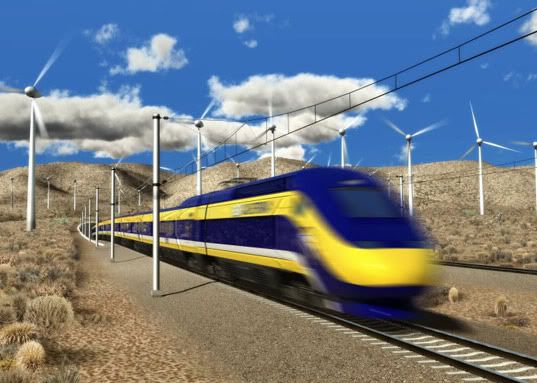When one first thinks about it, one would think the politics of not destroying civilization should be simple. It seems that "Not destroy civilization, Yes/No" would get a very high "Yes" vote.
In the immediate future in US political, however, its far more complicated than that, given that one party's position is "No", and the other party's position is "Maybe, a little bit of not destroying civilization, if its not too inconvenient". So, how would we go about not destroying civilization, why is the politics of not destroying civilization so messy, and what in the hell can we do about it? _____________ Posted at: Voices on the Square Crossposted at: The Stars Hollow Gazette Crossposted at: HillbillyReport.org Crossposted at: Agent OrangePopulist movements don't build themselves ...
- Picture Credit: David Leeson (#8)
Sunday, September 30, 2012
Sunday Train: Trains and Not Destroying Civilization
Sunday, August 12, 2012
Sunday Train: zOMG these aint REAL HSR trains!
crossposted from Voices on the Square
 This is more or less the three year anniversary of the first Sunday Train ~ a bit less than more, since this is the 12th of August 2012 and I think that the first Sunday Train was 16th of August, 2009. It emerged from a variety of blogging I had been doing over the previous couple of years, with a notion that if I set down a target of blogging on Sunday, it would make it easier for people to track the Sunday Train down. It was originally posted at my midnight-populist blogspot, Burning the Midnight Oil, crossposted to Agent Orange, My Left Wing, Progressive Blue and Docudharma, but I was never really enthusiastic about building up my own blog, and nor about the constraints of blogspot, so over time I settled on writing the Sunday Train at a community blog, cross-posting it to other community blogs, and posting the summary to Burning the Midnight Oil, with cross-links to the blogs containing that week's full post.
This is more or less the three year anniversary of the first Sunday Train ~ a bit less than more, since this is the 12th of August 2012 and I think that the first Sunday Train was 16th of August, 2009. It emerged from a variety of blogging I had been doing over the previous couple of years, with a notion that if I set down a target of blogging on Sunday, it would make it easier for people to track the Sunday Train down. It was originally posted at my midnight-populist blogspot, Burning the Midnight Oil, crossposted to Agent Orange, My Left Wing, Progressive Blue and Docudharma, but I was never really enthusiastic about building up my own blog, and nor about the constraints of blogspot, so over time I settled on writing the Sunday Train at a community blog, cross-posting it to other community blogs, and posting the summary to Burning the Midnight Oil, with cross-links to the blogs containing that week's full post.
The crosspost list also varied from time to time: of those original community blogs, I rarely visit My Left Wing or Docudharma much anymore, and the best of Progressive Blue has been folded into the broader coalition at Voices on the Square, which since its launch last month has been the new home base for Sunday Train. The Sunday Train still rolls into Agent Orange (aka "daily kos"), and has for some time also stopped at Hillbilly Report and the Stars Hollow Gazette, and occasionally at the European Tribune.
In celebration of the three year anniversary, more or less, I am reprinting the diary from the 16th August, 2009, "zOMG, these aint REAL HSR trains!"
-------------
posted at Voices on the Square
crossposted at Stars Hollow Gazette
Wednesday, August 8, 2012
Sunday Train: Cycle & Pedestrian Islands and Tiny Trains
crossposted from Voices on the Square
 "Oh, sure, more than 1/5 of journeys to work in Eindhoven, The Hague, Amsterdam and Utrecht in the Netherlands are by bike, but they are flat. It would never work here, its hilly." Given that Copenhagen has one of the highest European cycling mode shares in trips to work, winter is obviously not the obstacle that it is sometimes made out to be ~ ah, but hills. They are an insuperable obstacle.
"Oh, sure, more than 1/5 of journeys to work in Eindhoven, The Hague, Amsterdam and Utrecht in the Netherlands are by bike, but they are flat. It would never work here, its hilly." Given that Copenhagen has one of the highest European cycling mode shares in trips to work, winter is obviously not the obstacle that it is sometimes made out to be ~ ah, but hills. They are an insuperable obstacle.
Back in April, 2010, comparing Portland and Seattle, Jarret Walker asked, Should we plan transit for "bikeability"? This was following a project by Adam Parast comparing the cycling potential of Portland and Seattle, including potential bikeability with improved infrastructure. And the geography of Portland, with most development and activity on the flat or gently sloping floor of a valley, is substantially different from the geography of Seattle, built on "seven hills", with water obstacles tossed in for good measure.
Today's Sunday Train looks at what role public transport can serve in helping to increase cycling mode share.
----------------
Posted At: Voices on the Square
Crossposted to: The Stars Hollow Gazette
Crossposted to: HillbillyReport.org
Sunday, July 29, 2012
Sunday Train: Rescuing the Exurb from its Design
crossposted from Voices on the Square
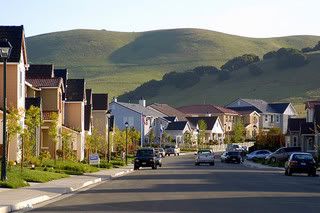 Back in April, Hope Yen was on the Huffington Post with Sprawling Suburbs Growth Falls To Historic Low Amid High Gas Prices
Back in April, Hope Yen was on the Huffington Post with Sprawling Suburbs Growth Falls To Historic Low Amid High Gas Prices
All across the U.S., residential exurbs that sprouted on the edge of metropolitan areas are seeing their growth fizzle, according to new 2011 census estimates released Thursday.
...
"The heyday of exurbs may well be behind us," Yale University economist Robert J. Shiller said. Shiller, co-creator of a Standard & Poor's housing index, is perhaps best known for identifying the risks of a U.S. housing bubble before it actually burst in 2006-2007. Examining the current market, he believes America is now at a turning point, shifting away from faraway suburbs to cities amid persistently high gasoline prices.
...
"Suburban housing prices may not recover in our lifetime," Shiller said, calling the development of suburbs since 1950 "unusual," enabled only by the rise of the automobile and the nation's highway system.
As it was originally designed, Outer Suburbia and Exurbia was designed to fail in an era where increasing energy efficiency will be a fundamental platform for ongoing growth. However, its possible to retrofit Outer Suburbia and Exurbia to a more sustainable design.
-----------
Sunday, July 22, 2012
Sunday Train: Trains, Buses, Bikes and Plan C
crossposted from Voices on the Square
 So, you've got Plan A. And in case something goes awry with Plan A, you've got your fallback plan, Plan B.
So, you've got Plan A. And in case something goes awry with Plan A, you've got your fallback plan, Plan B.
But what if the fit really hits the shan? What if all the assumptions that lie behind your planning turn out to be false. Things are far worse than ever contemplated in Plan A and Plan B? That's when you turn to your Plan C, your Plan in case of Complete Catastrophe. In the event of a complete catastrophe, all of the polite fictions of the normal planning process go out the window. Which also means that Plan C is quite often the answer to, "Oh, now what do we do?, and the answer is, "Come up with something that will work "
So, we have a crisis. A serious crisis, affecting our current transport system, which means a crisis that at the very least interferes with our supply of gasoline. But we have the Petroleum Reserve, so ... assume its not a temporary emergency, but a crisis that threatens to last for years. Whether the Crisis hits next year or next decade, well, I don't know that, do I? But suppose that its coming sometime in the next decade.
What would we face in coming up with something that will work?
Sunday, July 8, 2012
Sunday Train: California Senate Approves High Speed Rail Construction
Crossposted from its home station at Voices on the Square
Firedog Lake: California Legislature Passes High Speed Rail Bond Issue, Moving Project Forward ~ David Dayen
...
In a closely watched vote of the California state Senate, a bill to issue the first $5.8 billion in bonds for the construction of high speed rail lines passed 21-16. It needed all 21 votes to pass. Four Democrats voted no – including Allen Lowenthal, the Democratic candidate for Congress in CA-47, and Fran Pavley, the author of the state’s historic global warming law – but ultimately, just enough Democrats voted in favor of the bonds for them to pass. Joe Simitian and Mark DeSaulnier were the other Democrats who opposed the bill.
...
This does not end the battle for high speed rail. Between the bond issue and the federal money, that covers only about 1/5 of the total funding needed for the full project, which would connect Sacramento and San Diego and all points in between by high speed rail. But if this died today, you can be certain that nothing would ever get built. The federal government was prepared to take away the $3.2 billion in stimulus dollars earmarked for this stage of the project. And faith in the future of high speed rail in California – and indeed the nation – would have been sapped.
So ... what now? Join me at the home station or one of the stops along the way for a look to both the politics and transport policy ahead.
-----------------
Crossposted from Voices on the Square to:
Sunday, July 1, 2012
Sunday Train: Is State Sen. Simitian aiming to kill High Speed Rail in California?
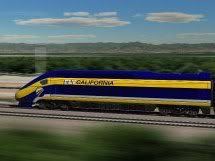 This coming week is supposed to contain an important symbolic Independence Day: the day when the California State Senate votes whether or not to proceed with one strategic element of Energy Independent Transport for the State of California, or whether to gamble the state's future on petroleum.
This coming week is supposed to contain an important symbolic Independence Day: the day when the California State Senate votes whether or not to proceed with one strategic element of Energy Independent Transport for the State of California, or whether to gamble the state's future on petroleum.
It is, of course, a very sure thing as a gamble ~ on the losing side. They aren't making more, and the butane from natural gas liquids and energy inefficient production of ethanol from corn starch that has been used to juke the states on US "liquid fuel production" doesn't change the fact that we still depend on petroleum imports for over half of our petroleum consumption. We deplete more and more low production cost petroleum every year, shifting our consumption to higher cost petroleum.
And even if we had the petroleum that Pollyannas would like to wish into existence, we can't afford to burn it all at an accelerating rate, due to the CO2 emissions that will result.
State Senator Simitian does not seem to see it that way, as he appears set to vote kill the effort to allow the California High Speed Rail project to break ground next year.
Now, in an wonderful display of political pretzel logic, State Senator Simitian threatens to kill the HSR project will declaring his strong support of it: it will all be someone else's fault if he votes to refuse to break ground next year.
---------------
Read the Sunday Train and join the conversation at:
Sunday, June 17, 2012
Sunday Train: The Steel Interstate and the Great Highway Lie
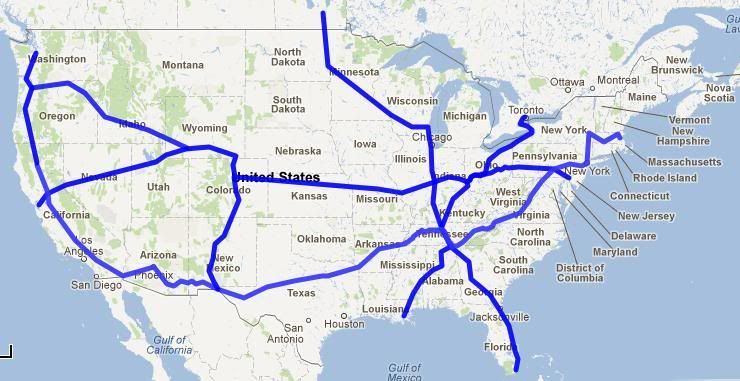 The last two weeks on the Sunday Train, I've been writing about the Steel Interstate. Steel Interstates & An America That Can Do Big Things (3 June) revisited the basic concept, and Putting Steel into the Amtrak Long Distance Backbone primarily discussed the first third of the Congressionally mandated reports on improving Amtrak's long distance rail network, but also discussed a bit about the role of long distance trains in the context of the Steel Interstate proposal.
The last two weeks on the Sunday Train, I've been writing about the Steel Interstate. Steel Interstates & An America That Can Do Big Things (3 June) revisited the basic concept, and Putting Steel into the Amtrak Long Distance Backbone primarily discussed the first third of the Congressionally mandated reports on improving Amtrak's long distance rail network, but also discussed a bit about the role of long distance trains in the context of the Steel Interstate proposal.
This week, the attention shifts from the Steel Interstate infrastructure to the substantial benefit to our existing legacy Asphalt Interstates if the United States elects to retain a viable national economy by implementing some form of Steel Interstate electric rapid freight rail system for long-haul freight.
Along the way, I spend a bit of time talking about misconceptions about the cost of our legacy system. Myth and misconception that are sufficiently widely help may be sufficient platform for gathering majority support for a system ... but its not a sufficient platform for putting together a sustainable system, in either physical, ecological, economic, or financial senses of "sustainable".
____________________
Join the Conversation at:
Sunday Train: Putting Steel into the Amtrak Long Distance Backbone
 Express HSR is sexy. Indeed, its sexy enough that when Big Oil propagandizes against it, they have to paint it as too expensive or something that America is too incompetent to handle, since the idea of sitting in an actually comfortable rail seat, watching a movie on a laptop or snacking on a sandwich while flying along at two to three times highway speeds, "just like in France or Japan or Spain", that's too appealing to convince a big majority of people that it would be anything but nice to have. So they have to con people into thinking of it as an unrealistic pipe dream that the US can do what Spain has been doing for a decade, France for three decades, and Japan for half a century.
Express HSR is sexy. Indeed, its sexy enough that when Big Oil propagandizes against it, they have to paint it as too expensive or something that America is too incompetent to handle, since the idea of sitting in an actually comfortable rail seat, watching a movie on a laptop or snacking on a sandwich while flying along at two to three times highway speeds, "just like in France or Japan or Spain", that's too appealing to convince a big majority of people that it would be anything but nice to have. So they have to con people into thinking of it as an unrealistic pipe dream that the US can do what Spain has been doing for a decade, France for three decades, and Japan for half a century.
Rapid Rail is not as sexy as Express HSR, but at least it is as fast as driving for most drivers on most corridors, and appreciably faster than driving on the corridor with the "best bones", like either Cleveland / Columbus or Davenport / Des Moines / Iowa wold be at 110mph top passenger speed. And it is much cheaper than Express HSR, with lots of potential corridors that local residents will start lobbying for once the first of the Rapid Passenger Rail services come into service.
But conventional long haul rail? Surely plodding along at 50mph to as slow as 30mph on heavy freight rail corridors is an obsolete holdover from an earlier time?
Well, no. Conventional long haul rail has a 21st century role to play, if the United States should declare Economic Independence and start working to regain the economic freedom that we surrendered to the Big Oil and the oil exporting regions in the 70's and 80's.
And so, in this evening's Sunday Train, we look at the "PRIIA Section 210" plans that Amtrak has developed for the five weakest of its fifteen long distance corridors: the California Zephyr, the Capitol Limited, the Cardinal, the Sunset Limited, and the Texas Eagle.
______________________
Join the discussion at:
Sunday, June 3, 2012
Sunday Train: Steel Interstates & An America That Can Do Big Things

Steel Interstate (noun): A Network of Electrified Heavy and Rapid Rail corridors that will allow the United States to remain a sovereign national economy.
Integrated into the Steel Interstates are Electricity Superhighways to connect Renewable Energy Resource areas to each other, to substantially increase the stability of the available Renewable Energy Supply, and to Energy Consumers, to ensure that no rich Renewable Electricity Resource goes untapped for lack of access to a electricity markets.
This is something that the United States should do. Depending on the twists and turns of international energy markets in the coming decades, it may be something the United States must do, to remain a coherent national economy.
If the efforts of Big Oil and Big Coal are successful, it is the kind of thing that America will not be able to do.
Yet, I believe it is something that the United States actually can do.
____________________
To ride the Sunday Train and join the conversation, check in at:
Sunday, May 27, 2012
Sunday Train: Sustainable Steam Train? / SF Muni - HSR Disconnect? / A Geary Aerobus?
 This week's Sunday Train is a trio of shorter topics. The first is a research development project to develop a modern steam train to run on biocoal. The target is a sustainable steam train that, as a headline grabber, will attempt to run at 130mph and break the world steam train speed record. There's much to like about this research development project ... but I am going to argue that biocoal to operate trains is not it.
This week's Sunday Train is a trio of shorter topics. The first is a research development project to develop a modern steam train to run on biocoal. The target is a sustainable steam train that, as a headline grabber, will attempt to run at 130mph and break the world steam train speed record. There's much to like about this research development project ... but I am going to argue that biocoal to operate trains is not it.
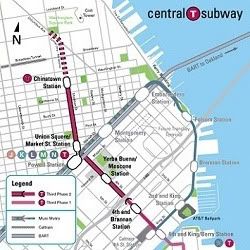 Second, SF's MUNI transport agency is one of the ten agencies slated to split $760m in Prop1a(2008) bond funds improvements to systems interconnecting with the planned High Speed Rail system. The balance of the $950m goes to the three existing Amtrak California intercity rail services, the Capitol Corridor, the San Joaquin, and the Surfliner.
Second, SF's MUNI transport agency is one of the ten agencies slated to split $760m in Prop1a(2008) bond funds improvements to systems interconnecting with the planned High Speed Rail system. The balance of the $950m goes to the three existing Amtrak California intercity rail services, the Capitol Corridor, the San Joaquin, and the Surfliner.
Odd thing is, the proposal that SF MUNI is setting forward doesn't actually connect to the proposed HSR system? What's up with that, after the break.
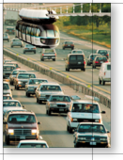 And third, a speculative look at an alternative technology that SF MUNI might deploy that money on, that actually would connect with the HSR system at the Transbay Terminal, as well as connecting to BART, the MUNI light rail network, the existing (and proposed alternative) Caltrain terminus at 4th and King, and provide express transit service along Geary Blvd.
And third, a speculative look at an alternative technology that SF MUNI might deploy that money on, that actually would connect with the HSR system at the Transbay Terminal, as well as connecting to BART, the MUNI light rail network, the existing (and proposed alternative) Caltrain terminus at 4th and King, and provide express transit service along Geary Blvd.
So instead of the traditional long trip, Sunday Train for Memorial Day Weekend has three short exursions. Join us for one, two, or all three, after the break.
_________________________
Read one or more and join the discussion:
Sunday, May 20, 2012
Sunday Train: Driving Ohio on Lake Erie
Note: a reprint of a Daily Kos diary from Jan, 2007
There is a common trend in my part of the Great Lakes States (Ohio, Indiana, Michigan) for discussion of sustainable energy to focus on commercial exploitation of the Wind Resource of the Great Lakes.
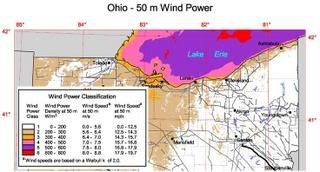 And why the Great Lakes? Because that's where the wind blows, as shown on the trimmed down version of the 2004 50m wind speed map for Ohio to the right. The pink, purple and red are the highest quality wind resources. (jpg) And this is just 50 metres ... at 100 metres it gets better still.
And why the Great Lakes? Because that's where the wind blows, as shown on the trimmed down version of the 2004 50m wind speed map for Ohio to the right. The pink, purple and red are the highest quality wind resources. (jpg) And this is just 50 metres ... at 100 metres it gets better still.
So what does this have to do with driving? Well, sometimes the wind blows harder, and sometimes the wind blows softer ... and on this point wind power and driving snuggle right together with a whole bunch of Energy Independence posts I have already made. How things link together ... is after the fold.
Join the discussion at:
Saturday, May 19, 2012
A Preliminary Analysis of the LAO Analysis of cap-and-trade funding of High Speed Rail
This blog has been used over the past year primarily as a central cross link point to access Midnight Oil blog posts at various community blog sites, with the Sunday Train series outnumbering all other series over the past year by a substantial margin.
The Sunday Train will run tomorrow as scheduled. This post is to publish a more formal analysis of the California Legislative Analyst's Office (LAO) risk assessment of investment in the California High Speed Rail project. Regular readers of the Sunday Train will know that I see the project as moving in the right direction with the most recent revision of the CHSRA Business Plan. However, the California LAO has taken a different view, and so starting a few weeks back I took a careful look at their analysis of the use of cap and trade funding in particular. This analysis is the result of that look at their work.
_________________________
Look for online commentary at:
European Tribune (forthcoming)
The Stars Hollow Gazette (forthcoming)
Progressive Blue (forthcoming)
Daily Kos (forthcoming)
________________________
- · Would Not Help Achieve AB 32’s Primary Goal.
- · High-Speed Rail Would Initially Increase GHG Emissions for Many Years
- · Other GHG Reduction Strategies Likely to Be More Cost Effective.
- The Initial Construction Segment (ICS) from Merced to Bakersfield;
- A construction segment from Bakersfield to Lancaster/Palmdale;
- A construction segment from Lancaster/Palmdale to the San Fernando Valley;
- A construction segment to connect from the San Joaquin Valley to San Jose;
- And completion of the “bookends” to the San Francisco Transbay Terminal and LA Union Station.
Sunday, May 13, 2012
Sunday Train: Faster Trains Yields More Services Per Day
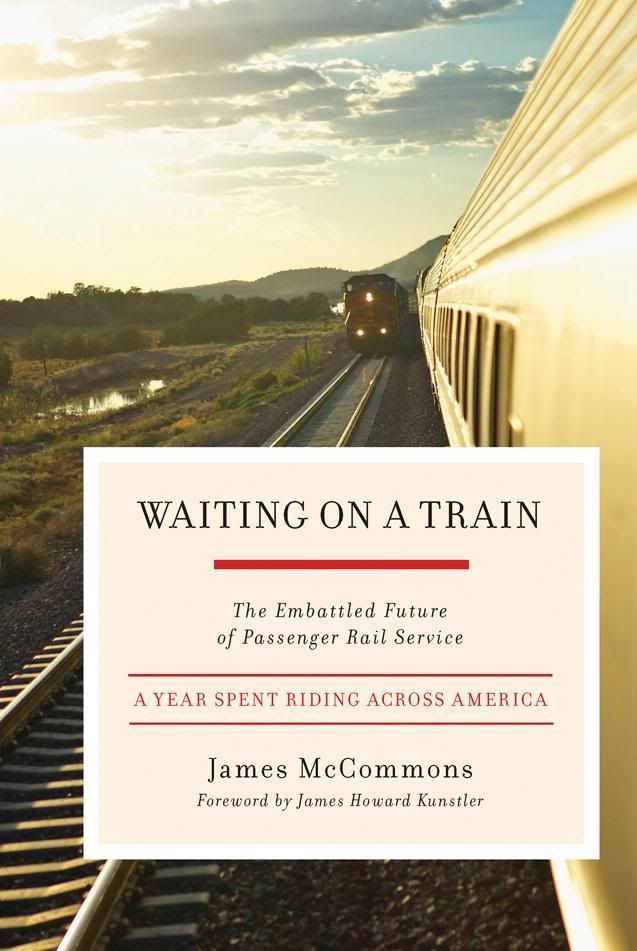 Back in the 29 Nov 2009 Sunday Train, Frequency and Waiting on a Train, I reacted to a point made in John McCommon's book, Waiting on a Train:
Back in the 29 Nov 2009 Sunday Train, Frequency and Waiting on a Train, I reacted to a point made in John McCommon's book, Waiting on a Train: "Once those intermodal trains can go through Stampede Pass, it will take some traffic off the main line and free up more room for additional passenger trains," said Uznanski. By bringing the number of trains up to eight a day between Vancouver and Portland, ridership and ticket revenue will increase significantly. Currently ticket sales - what is known as farebox - cover 43% of the Amtrak Cascades' operating expenses; the state subsidizes the remainder. Run eight trains daily, however, the farebox recovery goes up to 70%. It's all about frequency. When trains are frequency and convenient, ridership - particularly business travel - grows dramatically, said Uznanski. It was a mantra I was to hear from experts all across the country - frequency builds ridership and only frequency significantly builds farebox recovery. Sure its great to have trains running more than 100mph in a corridor, but if there are only a couple of trains a day, they just aren't convenient enough to move people off the highway or away from the airport. - John McCommons, Waiting on a Train, Chelsea Green Publishing: Vermont, p. 51This came back to mind when I was thinking last week about the "Cornhusker Rocket" proposal to reintroduce regular corridor service between Omaha and Chicago via Des Moines, Iowa City and the Quad Cities. Often times, a substantial benefit in getting train speeds up is that ability to operate more services per day with the same number of trains.
___________________________
Read the Sunday Train and join the conversation at:
The Stars Hollow Gazette
HillbillyReport.org
Progressive Blue
Daily Kos
Sunday, May 6, 2012
Sunday Train: The Rock Island Line is a Mighty Fine Iowa Rapid-Rail Road
 The Iowa Department of Transport has just completed the Chicago to Omaha Regional Passenger Rail System Planning Study, to select its preferred alignment for a detailed Environmental Impact Report.
The Iowa Department of Transport has just completed the Chicago to Omaha Regional Passenger Rail System Planning Study, to select its preferred alignment for a detailed Environmental Impact Report.
There were five alignments in the study, based on the five historical passenger rail services between Chicago and Omaha. From north to south, these are: the Illinois Central; the Chicago & Northwestern; the Milwaukee Road; the Rock Island Line; and the Burlington Line. The study also included one combined alignment, based on where the Burlington Line and the Rock Island Line cross in Wyanet in western Illinois.
The combined alignment is the one selected, taking the Burlington alignment out of Chicago, and then taking the Rock Island line to Moline in the Quad Cities on the Illinois / Iowa border and through Iowa City and Des Moines to Omaha (probably via Council Bluffs, but that has yet to be determined).
Read Today's Sunday Train and join the conversation at
Sunday, April 29, 2012
Sunday Train: Leveraging HSR for a Fresno Regional Rail Corridor
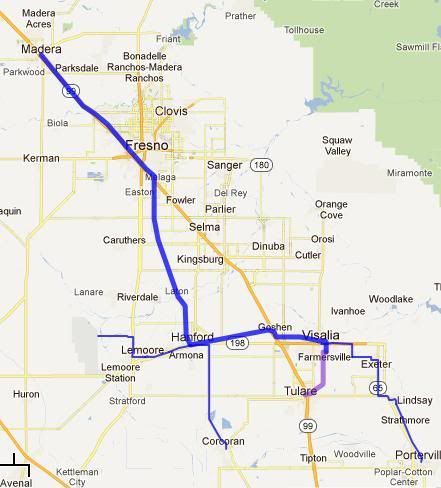 Kings County officials have been opposed all proposed routes:
Kings County officials have been opposed all proposed routes: Board members said no high-speed rail route through Kings County would be acceptable while denouncing the Authority and its Fresno-to-Bakersfield environmental impact report. “I think we should come out and oppose high-speed rail in Kings County, no matter what alignment they have,” said Supervisor Tony Barba during a discussion of the county’s official response to the EIR, which is due Thursday. He was applauded by a large crowd that nearly filled the Board of Supervisors’ chambers at the Kings County Government Center.And then they opposed getting started on California HSR:
HANFORD — Kings County supervisors on Tuesday will likely ask three key legislators to delay high-speed rail funding until the project resolves local conflicts. ... The Legislature is expected to vote in June whether to spend $2.7 billion in state bond money on the project, which has created major controversy in the San Joaquin Valley and stoked opposition from several cities and counties who believe it should be scrapped. Denying the funding would stop the Authority from starting construction in Fresno later this year or in early 2013.And now, County officials seek to preserve Amtrak :
... But Authority officials have recently entered into discussions with Kings County to see if Amtrak service through Hanford and Corcoran can be preserved, said Larry Spikes, Kings County administrative officer. Downtown stations are considered critical to cities’ local economy. Authority Board Chairman Dan Richard couldn’t be reached for comment. “Taking Amtrak right out of the heart of Hanford and Corcoran is just not a good idea,” Spikes said.So, don't want the HSR Station in town, don't want the HSR to go outside of town, and wants Amtrak to be continued to Hanford and Corcoran at slow speed when the San Joaquin after the high speed route between Merced and Bakersfield becomes available. What I am looking in this week's Sunday Train is a different way to go about this that provides a mix of local and intercity transport benefits to the major county centers: the Fresno Regional Rail Corridor.
__________________________
Read about the system and join the conversation at:
The Stars Hollow Gazette
Hillbillyreport.org
Progressive Blue
Daily Kos
